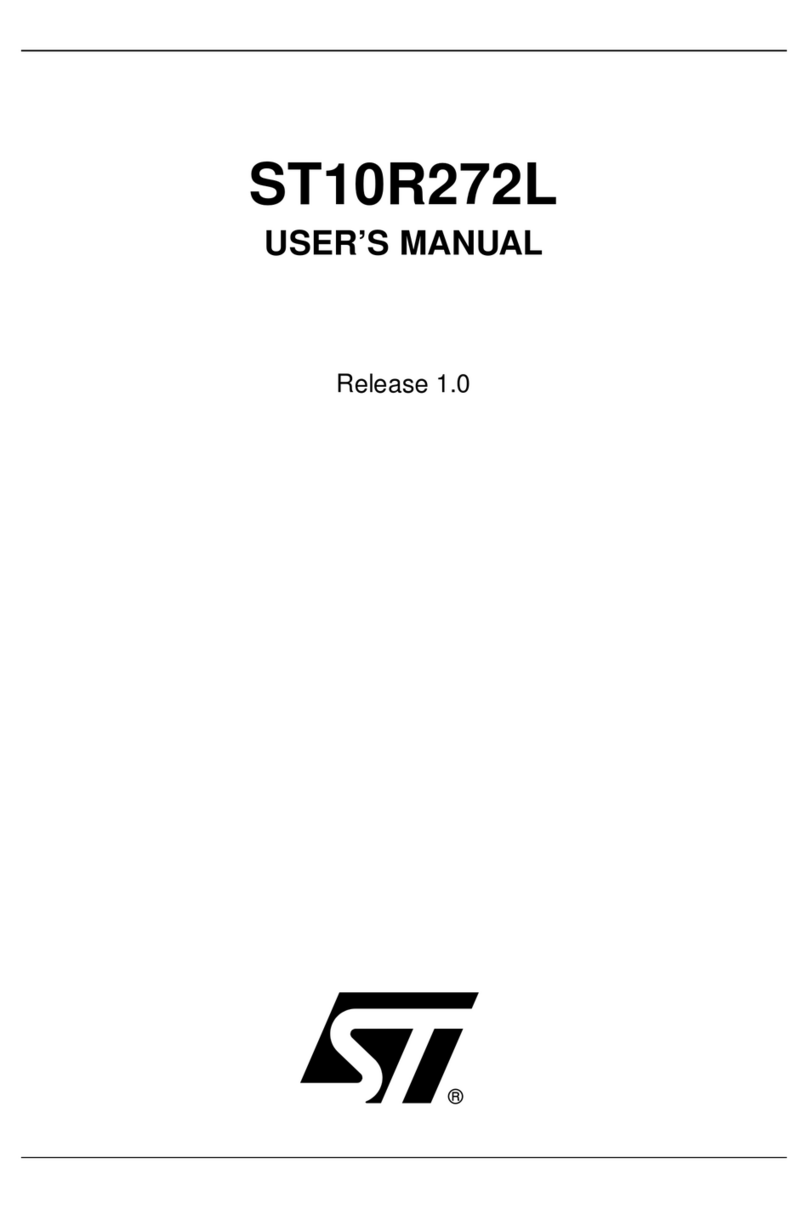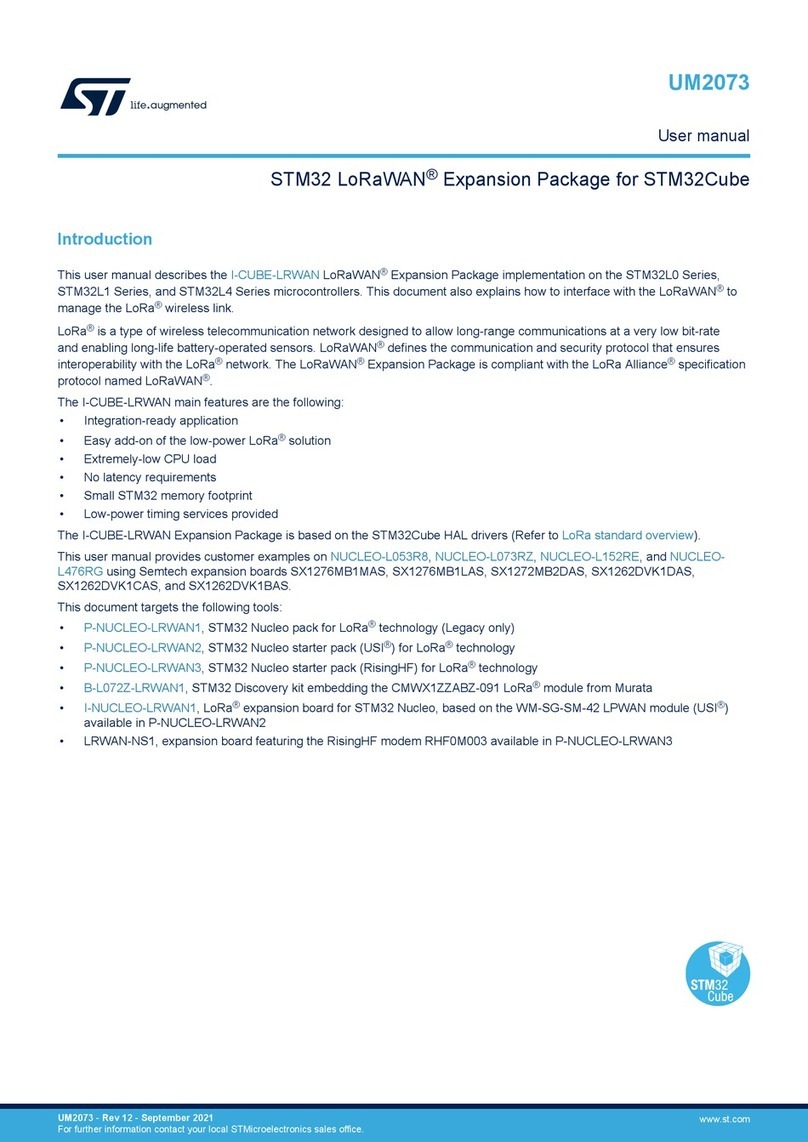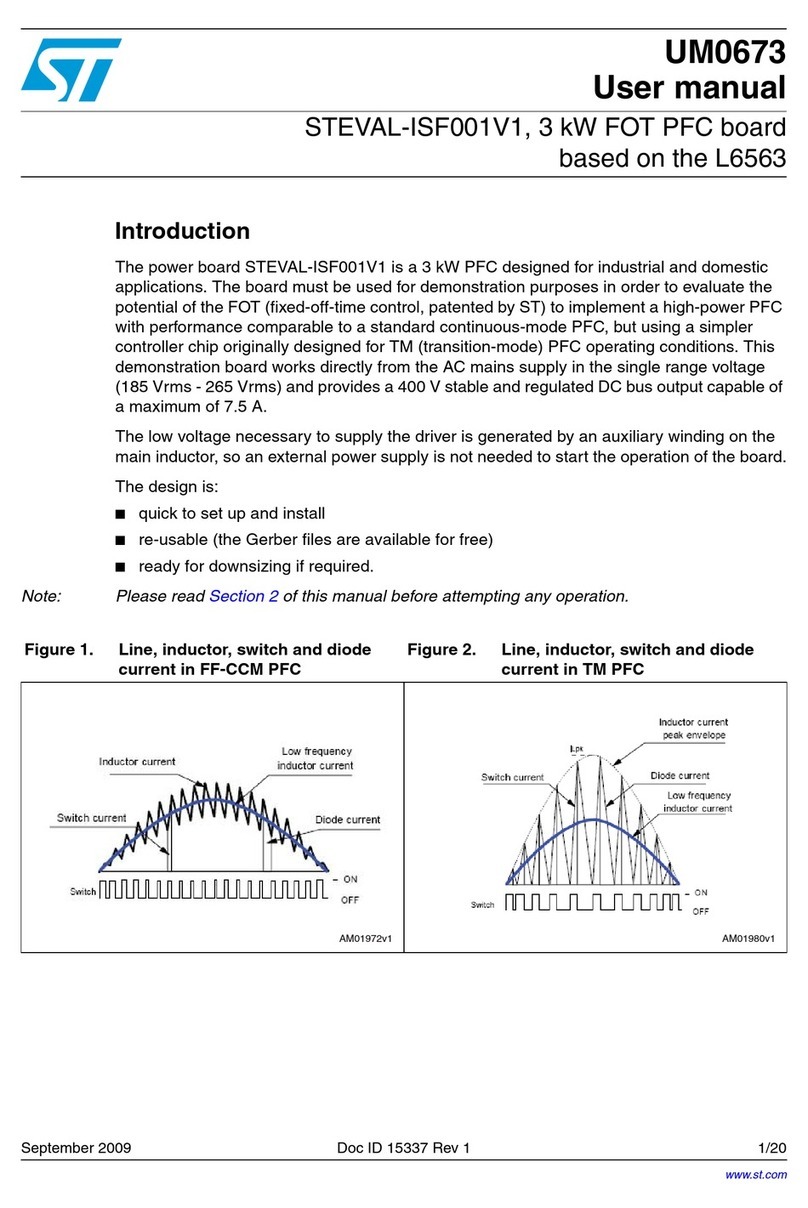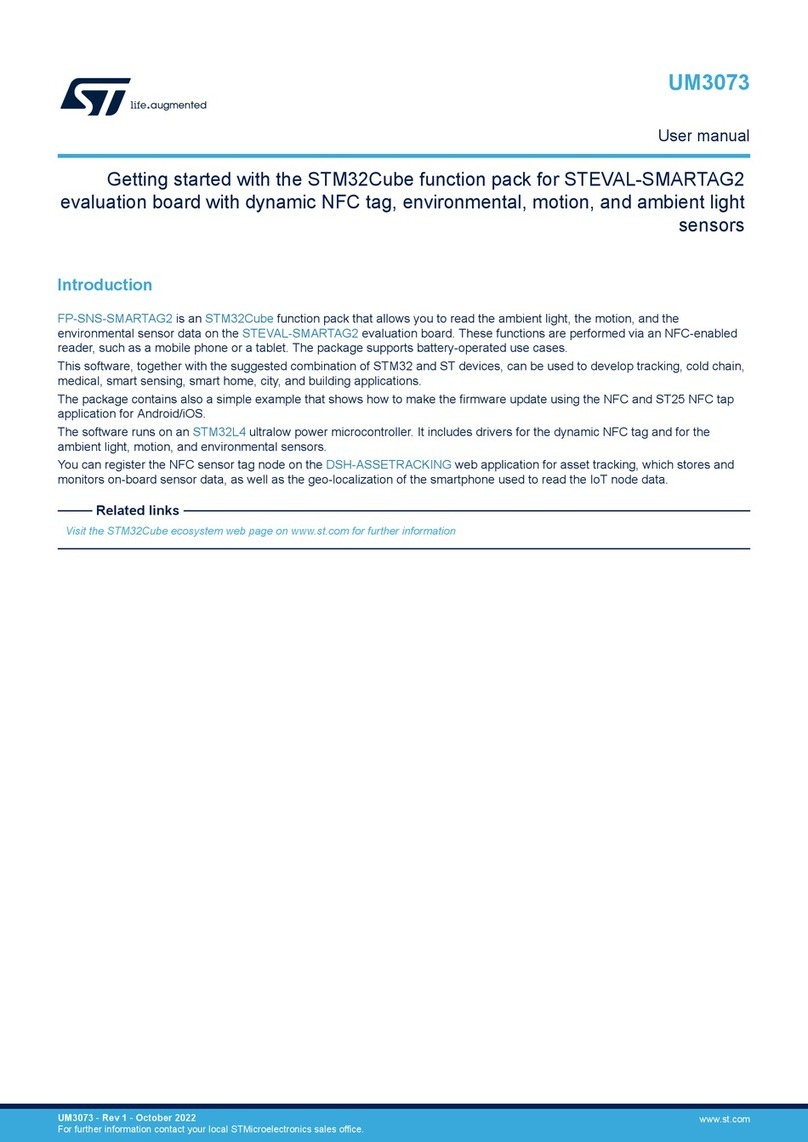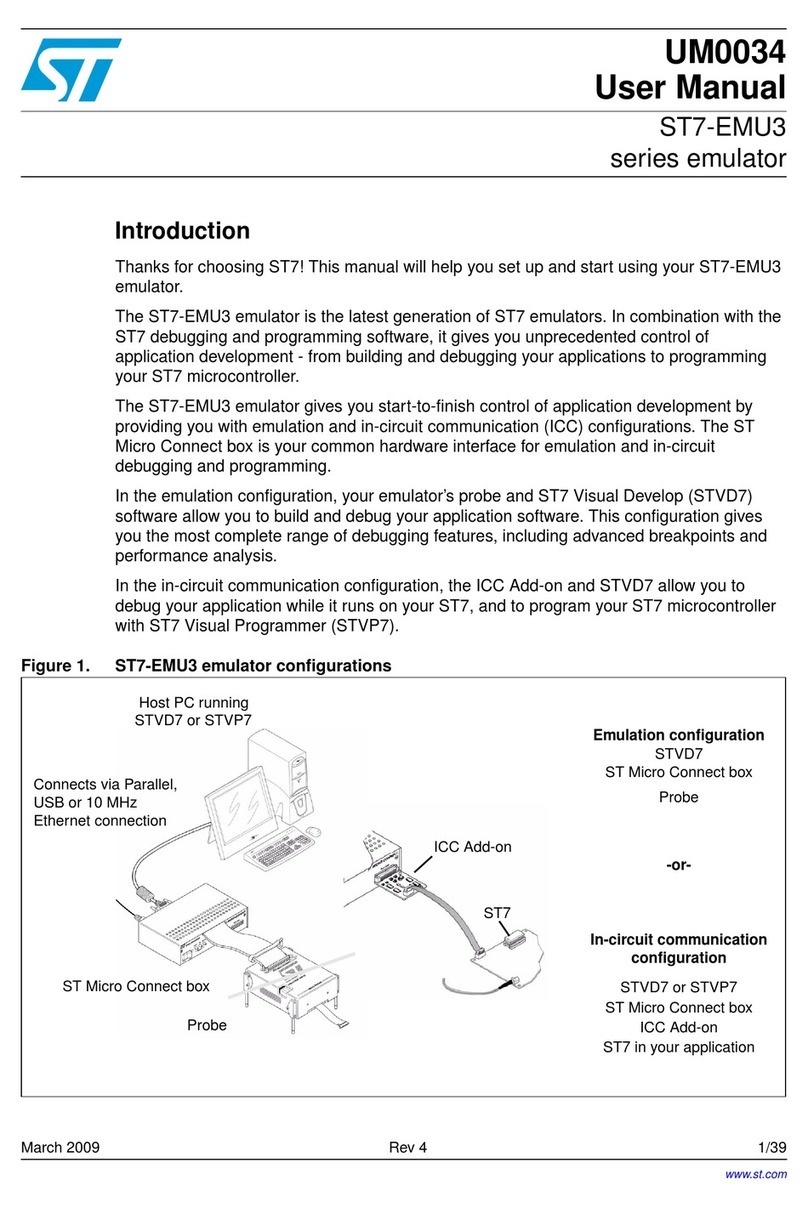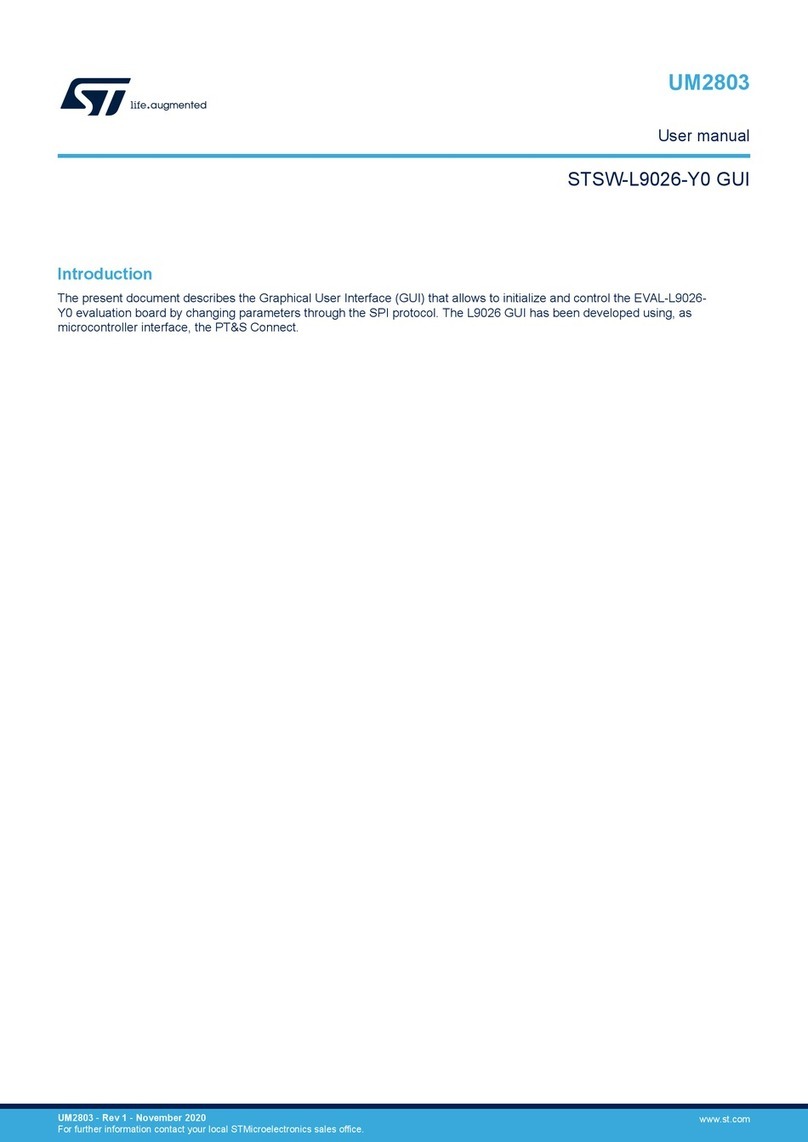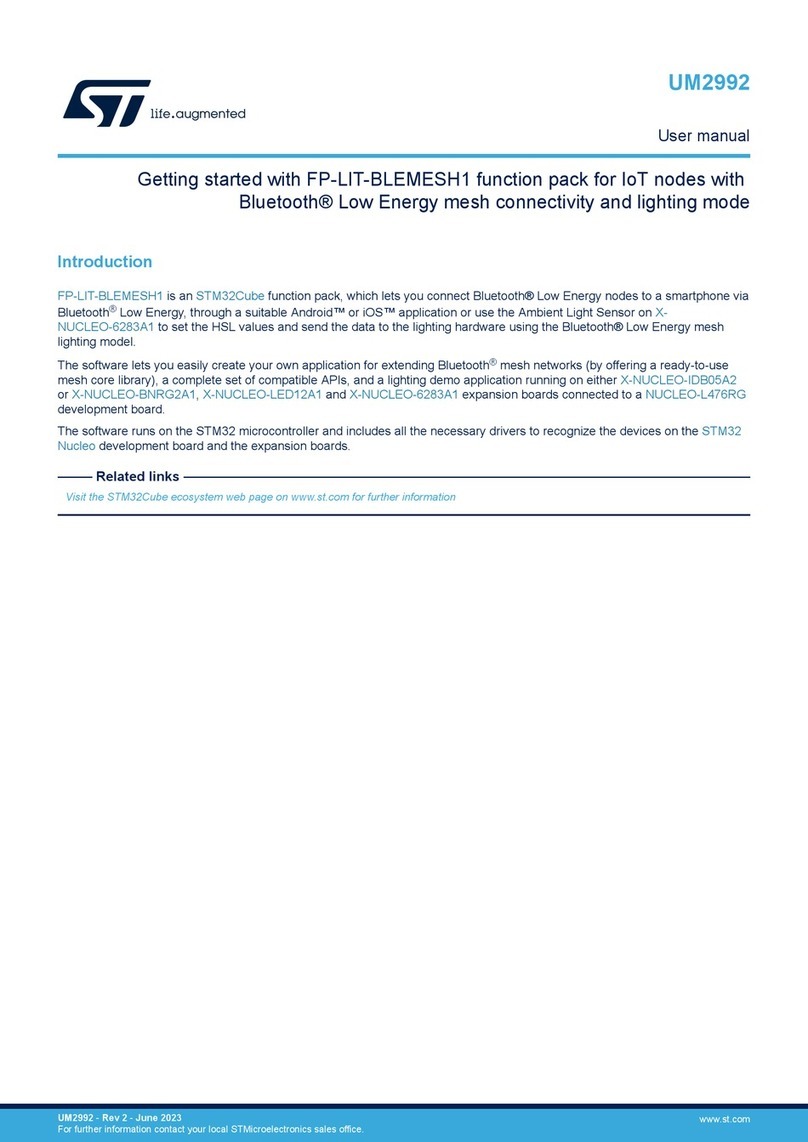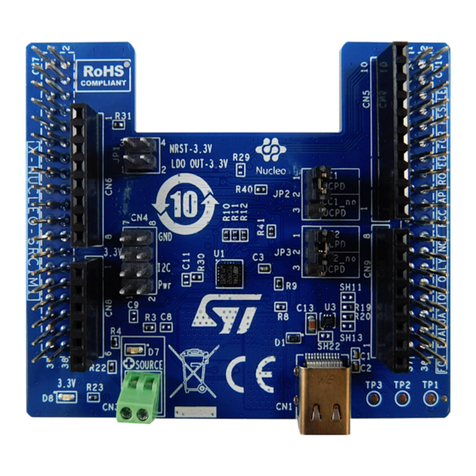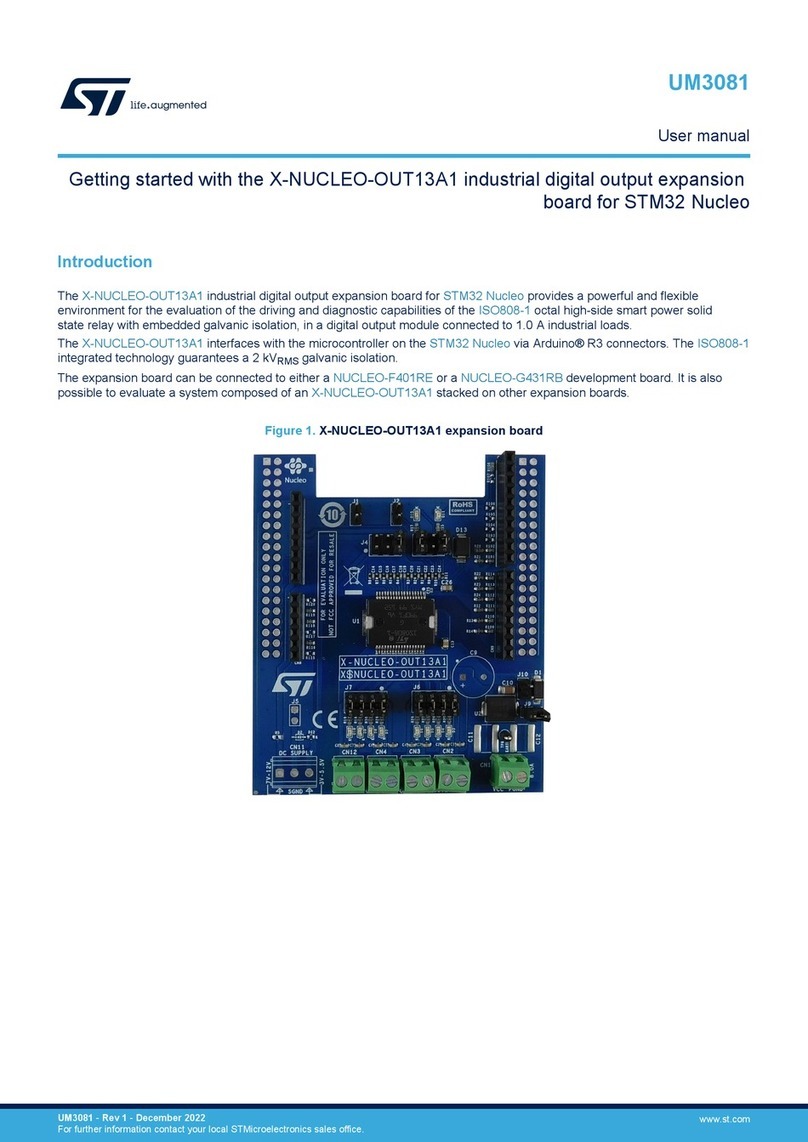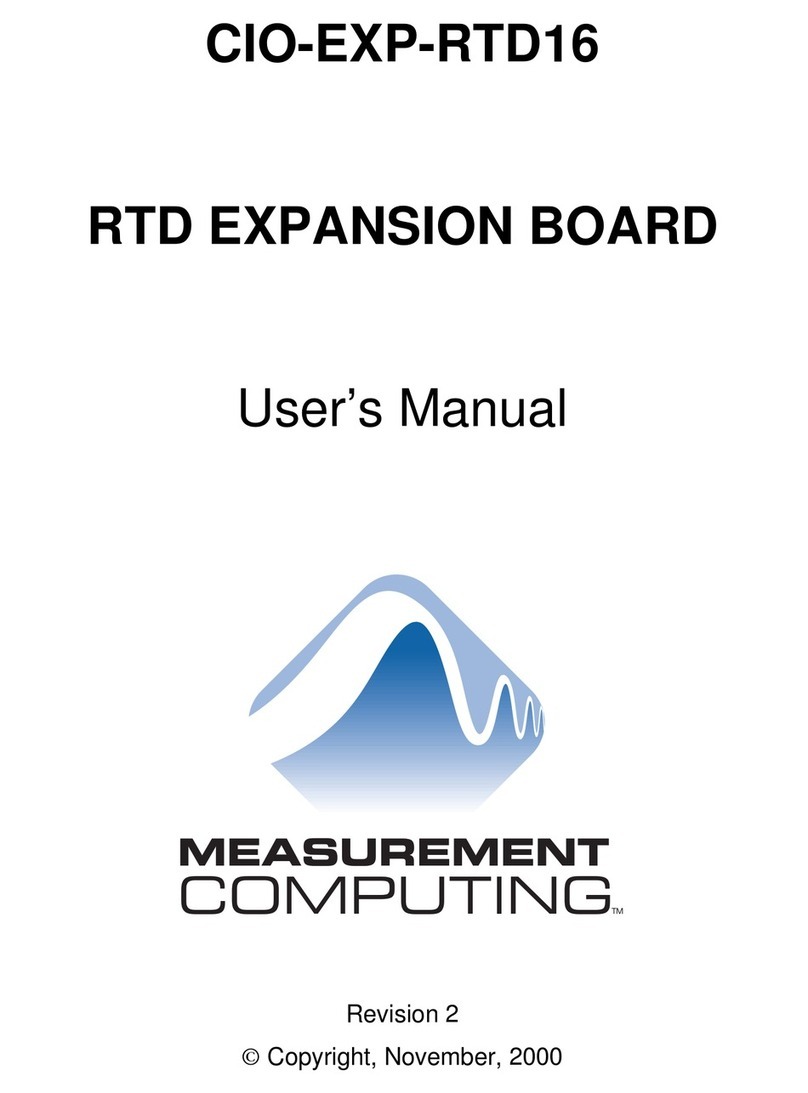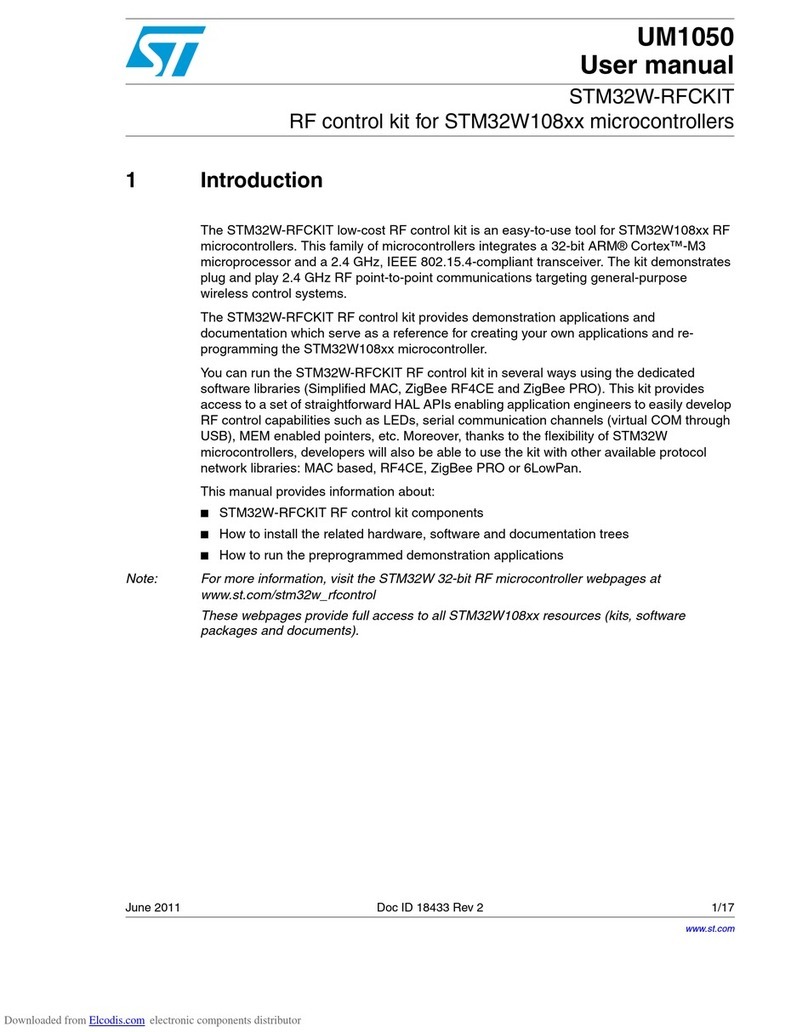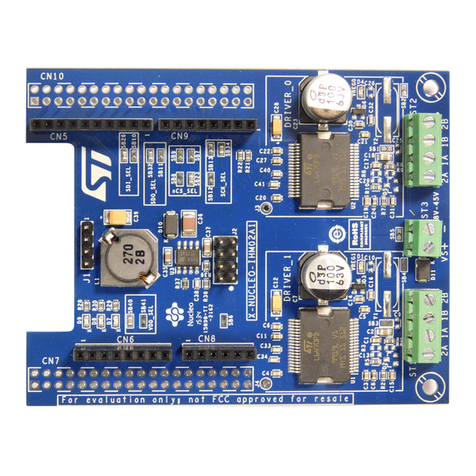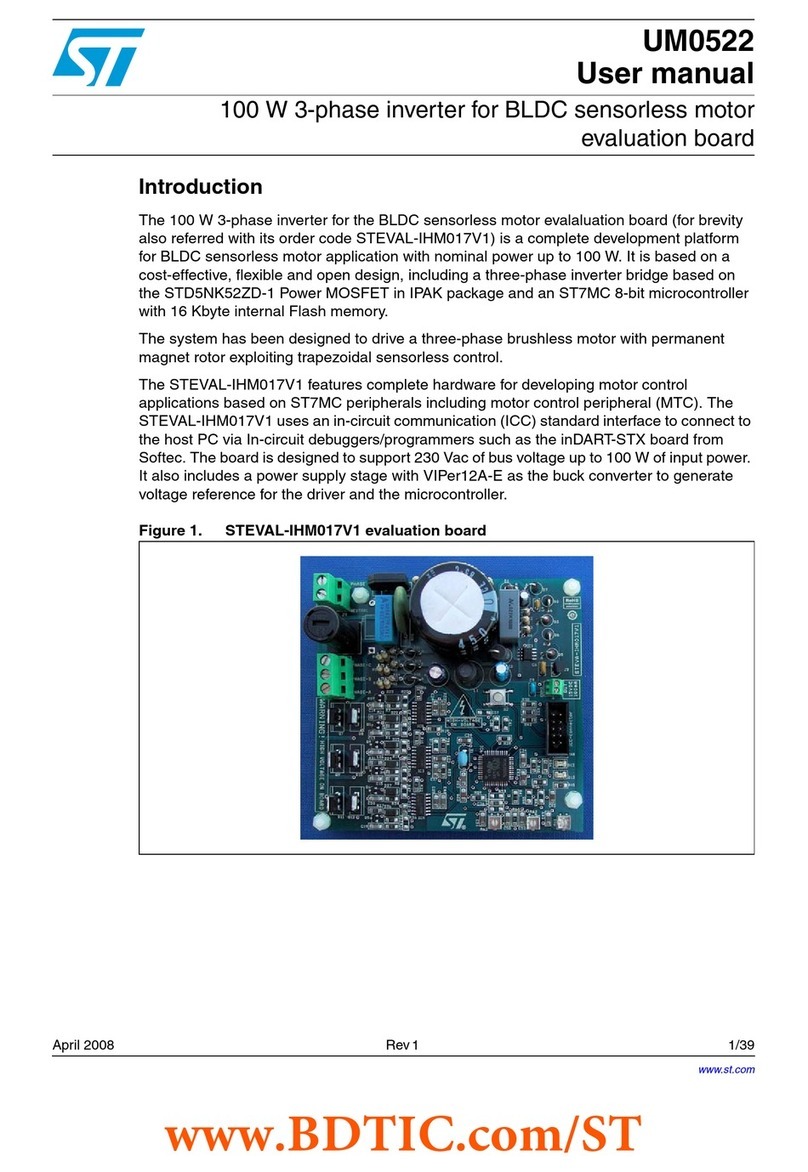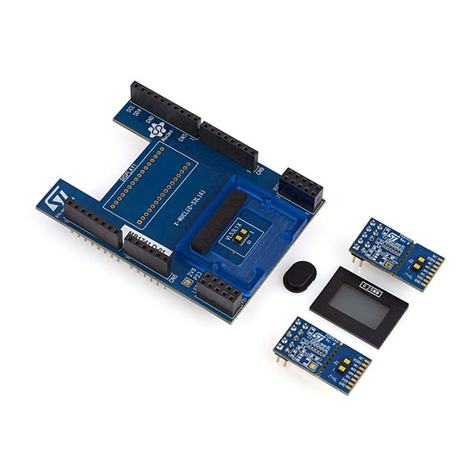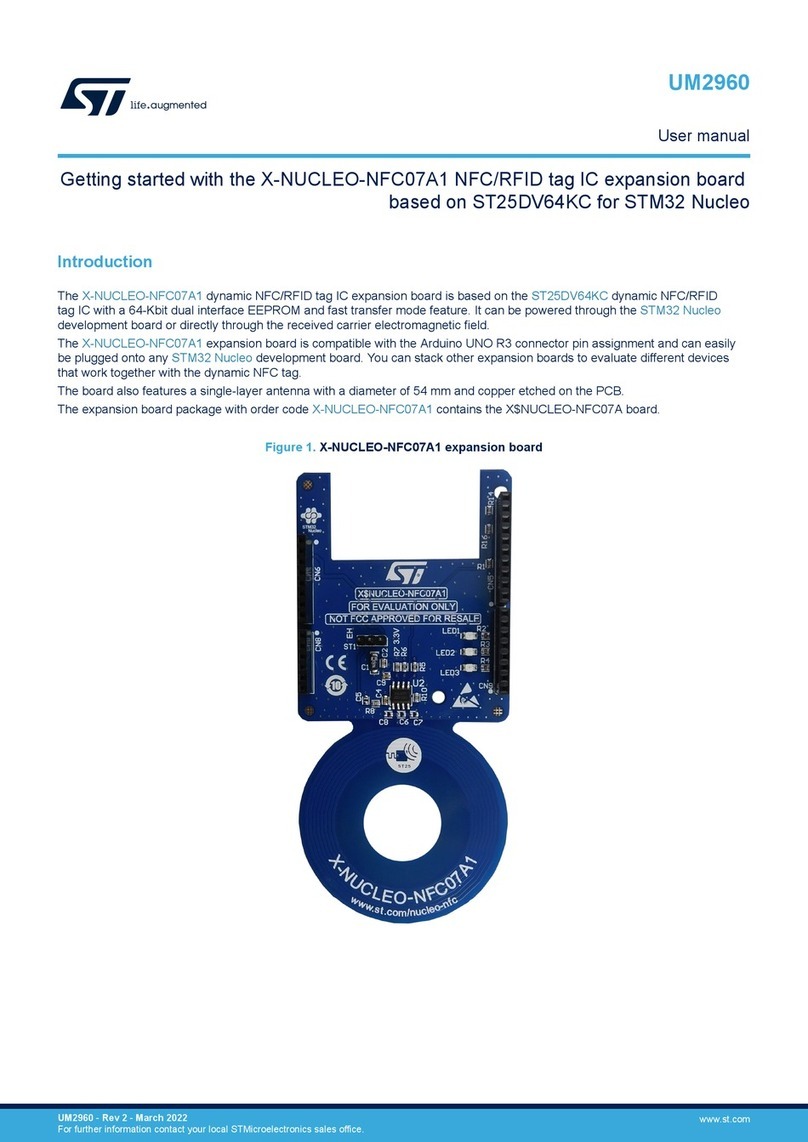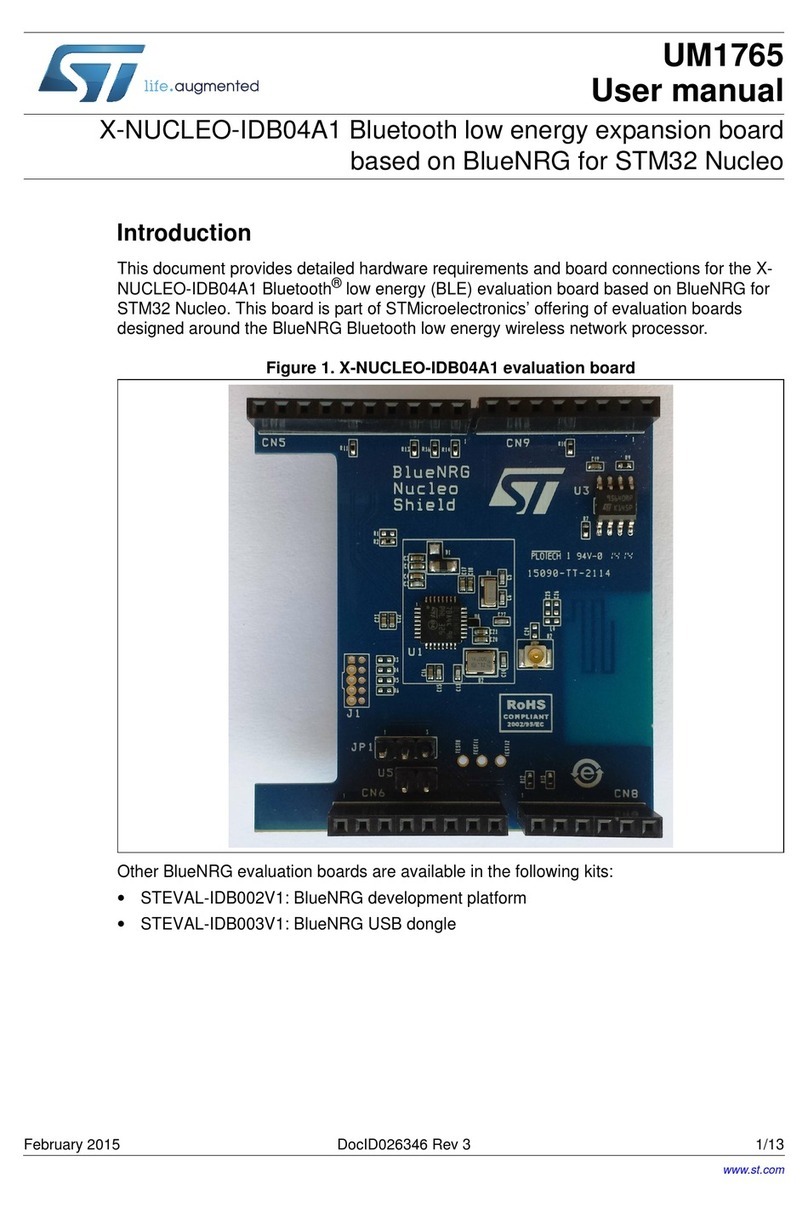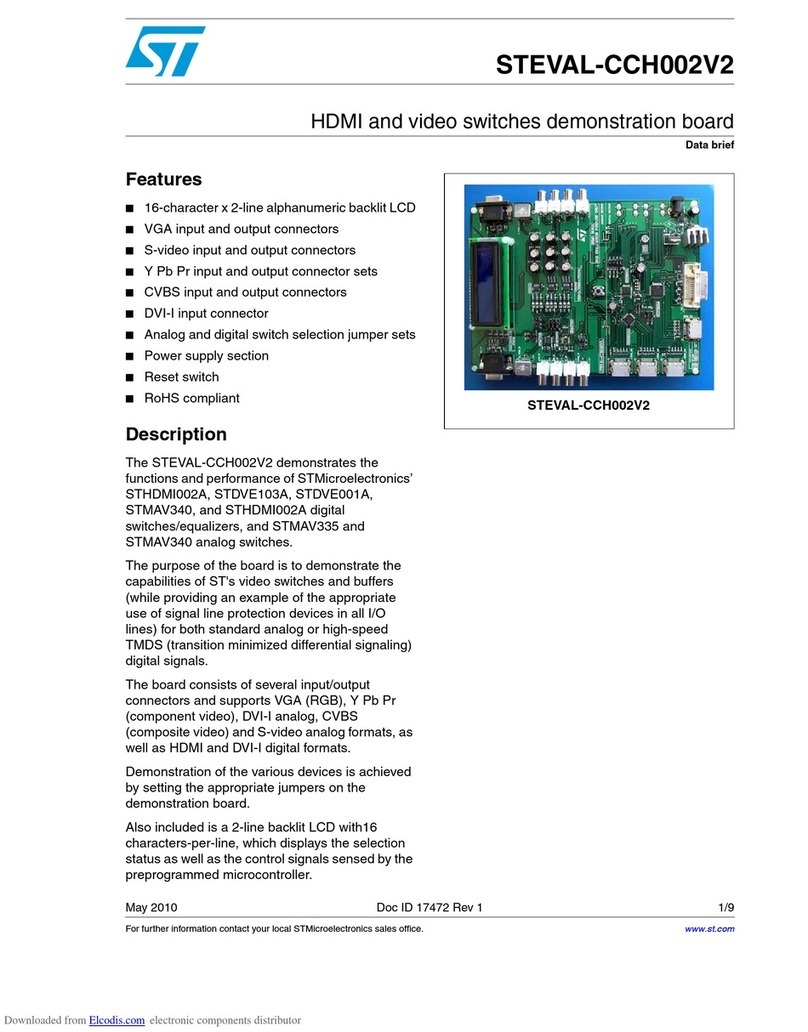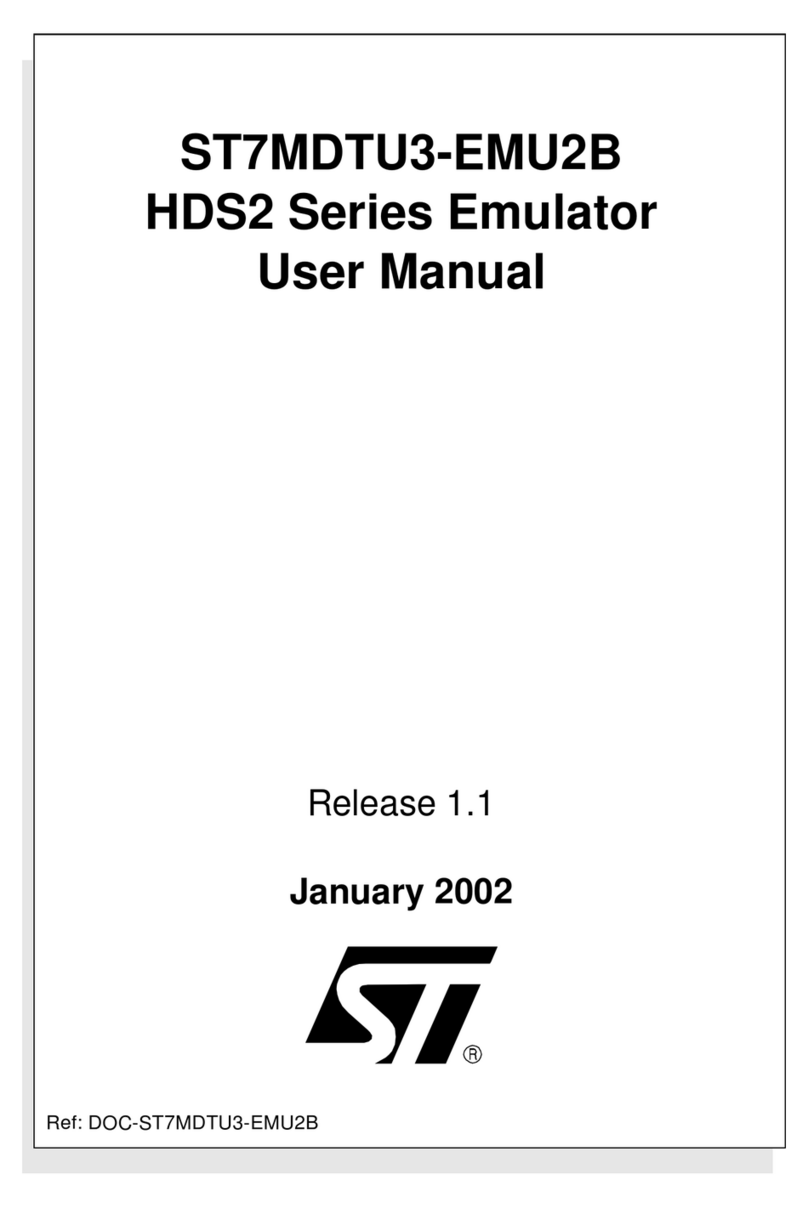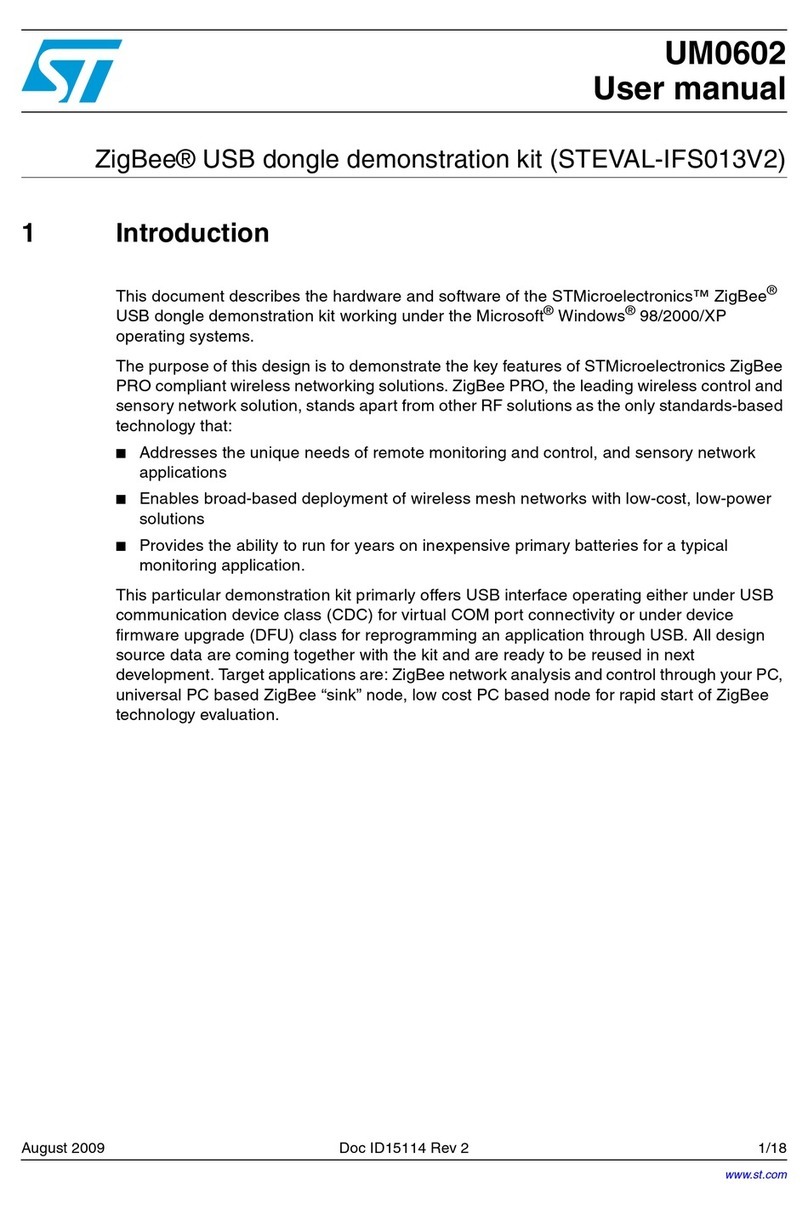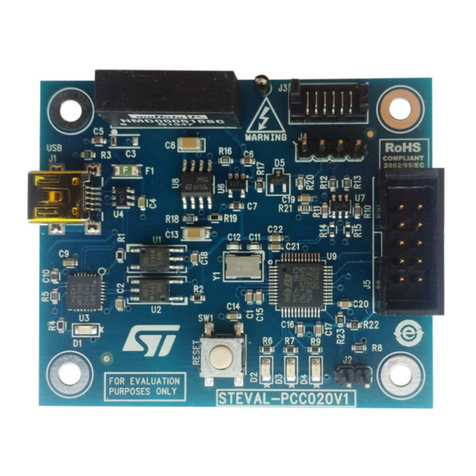
Contents STM32F038x6
2/21 DocID026423 Rev 2
Contents
1 Summary of device limitations . . . . . . . . . . . . . . . . . . . . . . . . . . . . . . . . 4
2 Description of device limitations . . . . . . . . . . . . . . . . . . . . . . . . . . . . . . . 6
2.1 USART . . . . . . . . . . . . . . . . . . . . . . . . . . . . . . . . . . . . . . . . . . . . . . . . . . . . 6
2.1.1 Start bit detected too soon when sampling for NACK signal from
the smartcard . . . . . . . . . . . . . . . . . . . . . . . . . . . . . . . . . . . . . . . . . . . . . . 6
2.1.2 Break request can prevent the Transmission Complete flag (TC)
from being set . . . . . . . . . . . . . . . . . . . . . . . . . . . . . . . . . . . . . . . . . . . . . 6
2.1.3 nRTS is active while RE or UE = 0 . . . . . . . . . . . . . . . . . . . . . . . . . . . . . 6
2.1.4 Consistency not checked in mode 1 of automatic baud rate
detection . . . . . . . . . . . . . . . . . . . . . . . . . . . . . . . . . . . . . . . . . . . . . . . . . 7
2.1.5 Framing error (FE) flag low upon automatic baud rate detection error . . 7
2.1.6 Communication parameters reprogramming after ATR in Smartcard
mode when SCLK is used to clock the card . . . . . . . . . . . . . . . . . . . . . . 7
2.1.7 Last byte written in TDR might not be transmitted if TE is cleared
just after writing in TDR . . . . . . . . . . . . . . . . . . . . . . . . . . . . . . . . . . . . . . 7
2.2 GPIO . . . . . . . . . . . . . . . . . . . . . . . . . . . . . . . . . . . . . . . . . . . . . . . . . . . . . 8
2.2.1 Extra consumption on GPIOs PB0..1 on 20/25/28-pin devices . . . . . . . . 8
2.2.2 GPIOx locking mechanism not working properly for GPIOx_OTYPER
register . . . . . . . . . . . . . . . . . . . . . . . . . . . . . . . . . . . . . . . . . . . . . . . . . . . 8
2.3 I2C . . . . . . . . . . . . . . . . . . . . . . . . . . . . . . . . . . . . . . . . . . . . . . . . . . . . . . . 8
2.3.1 Wrong data sampling when data set-up time (tSU;DAT) is shorter than
one I2CCLK period . . . . . . . . . . . . . . . . . . . . . . . . . . . . . . . . . . . . . . . . . 8
2.3.2 Spurious bus error detection in master mode . . . . . . . . . . . . . . . . . . . . . 9
2.3.3 10-bit slave mode: wrong direction bit value after Read header
reception . . . . . . . . . . . . . . . . . . . . . . . . . . . . . . . . . . . . . . . . . . . . . . . . . 9
2.3.4 10-bit combined with 7-bit slave mode: ADDCODE may indicate wrong
slave address detection . . . . . . . . . . . . . . . . . . . . . . . . . . . . . . . . . . . . . 10
2.3.5 Wakeup frames may not wakeup the MCU mode when STOP mode
entry follows I2C enabling . . . . . . . . . . . . . . . . . . . . . . . . . . . . . . . . . . . 10
2.3.6 Wakeup frame may not wakeup from STOP if tHD;STA is close to
HSI startup time . . . . . . . . . . . . . . . . . . . . . . . . . . . . . . . . . . . . . . . . . . . 11
2.3.7 Wrong behavior in Stop mode when wakeup from Stop mode is
disabled in I2C . . . . . . . . . . . . . . . . . . . . . . . . . . . . . . . . . . . . . . . . . . . . 11
2.3.8 10-bit master mode: new transfer cannot be launched if first part of the
address has not been acknowledged by the slave 12
2.4 SPI . . . . . . . . . . . . . . . . . . . . . . . . . . . . . . . . . . . . . . . . . . . . . . . . . . . . . . 12
2.4.1 BSY bit may stay high when SPI is disabled . . . . . . . . . . . . . . . . . . . . . 12
